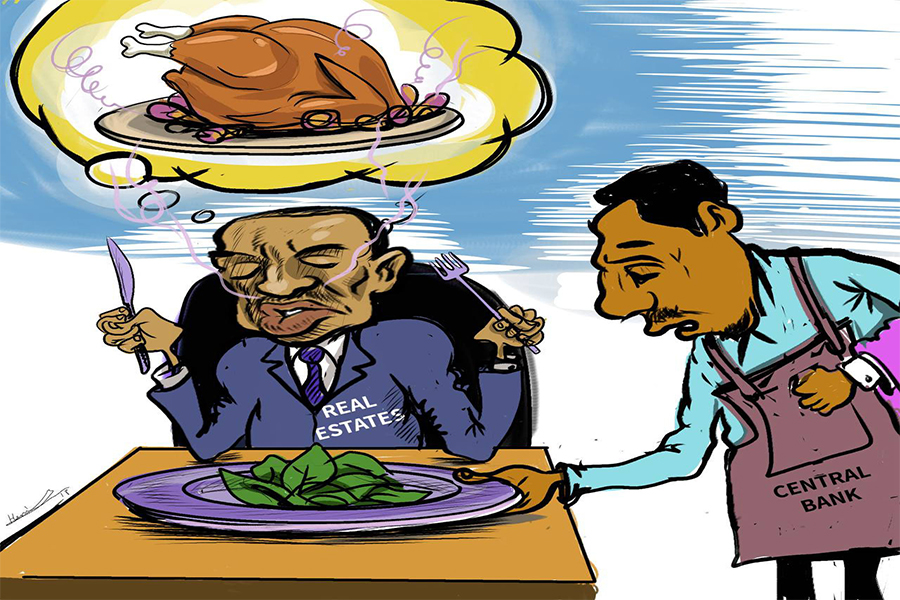My first visit to a palace was Ankober Palace, in the North Shoa Zone of Amhara Regional State about a decade ago. A relatively small, two-story medieval structure, it sits atop a hill, built in a traditional Ethiopian architectural style. Ankober Palace’s prominence does not lie in its grandeur or sophistication but in its historical importance as the seat of the Shoan dynasty. Founded by Yekuno Amlak, it later became the power base of Haile Melekot, the father of Emperor Menelik II.
Menelik II eventually left Ankober, established Addis Abeba, and made it his capital, leaving Ankober to fade into historical obscurity. However, during its peak, Ankober Palace held great military and economic importance, positioned along key caravan routes passing through Ankober town and the thriving trade hub of Aliyu Amba. It also served as a strategic military outpost, offering a 360-degree view over vast lands stretching to the Afar lowlands.
My second palace visit took me far from Ethiopia, to Vienna, Austria, where I toured Schonbrunn Palace, the summer residence of the Habsburg dynasty. Unlike Ankober, Schonbrunn was a monumental architectural marvel, reflecting the power of the Austro-Hungarian Empire, which dominated central Europe for centuries. The palace boasts 1,400 rooms and sits on 400 acres of land, with its vast gardens being a major attraction.
Schonbrunn holds a unique historical connection to Ethiopia. One of its most famous occupants, Empress Maria Theresa, introduced the Maria Theresa Thaler, a silver coin that became a widely accepted currency across Ethiopia, the Middle East, Africa, and the Americas in the 18th and 19th centuries. Maria Theresa was also the mother of Marie Antoinette, the last queen of France, who was guillotined alongside King Louis XVI during the French Revolution.
A recent visit to the Tokyo Imperial Palace revealed yet another architectural marvel, much like Schonbrunn in Vienna. Built on the grounds of the medieval Edo Castle and surrounded by moats to deter invaders, it echoed the strategic defensive purpose of Ankober Palace.
The Tokyo Imperial Palace spans 284 acres, covered in pristine Japanese gardens and dense forests. Exploring its vast grounds took nearly an entire day, yet we barely covered a fifth of the total area, despite walking for six to seven hours. The journey was physically exhausting, but the palace’s grandeur and historical richness made it an unforgettable experience.
On a Sunday afternoon, while driving along Menelik II Avenue, I had no idea what fate had in store for me. I noticed a few private motorists inquiring at the gate of the National Palace, also known as Iyobeliyu, the former seat of Emperor Haile Selassie I. It was unusual to see the palace grounds open to the public, so I stopped to ask.
To my surprise, the palace was open for visitors for a fee of 1,000 Br, with a two-hour guided tour. After a brief ten-minute wait, I was assigned a personal guide, as no other visitors joined.
We began in the vehicle gallery, which houses 17 of the 200 vintage cars once used by Ethiopian royalty. The first to catch my eye was a Fiat truck, designed for the emperor’s travels, complete with a bedroom, living room, office, and toilet.
Next was a sleek black limousine, reminiscent of a James Bond film, its wide body and elegant design exuding sheer power. The collection featured more exotic cars, including Cadillacs, Rolls-Royces, and Chryslers, all in top roadworthy condition. A white Cadillac ambulance accompanied the royal family on their travels.
One of the most surprising finds was a seemingly simple Porsche, which concealed a remarkable secret; it was equipped with propellers that, when deployed, transformed it into an amphibious car.
The surprises continued with a royal rail coach, custom-built for the Emperor. Furnished with luxurious suites, it featured a bedroom for the Emperor and Empress, a kitchen, a dining hall, a meeting room, and restrooms, a mobile palace allowing the emperor to work and relax while on the move.
We then stepped outside into idyllic gardens, surrounded by indigenous vegetation and a landscape that reflected meticulous planning and expert craftsmanship. At the centre stood the main palace, its creamy-white facade adorned with graceful monuments and sculptures. The symmetrical design and expansive front facade bore a striking resemblance to Schonbrunn Palace in Vienna.
Inside, a grand hallway led to two reception halls, mirroring each other in their elegance. A glimpse into the restricted areas revealed exquisite chandeliers, red Persian carpets, and finely crafted wooden furnishings, creating the illusion of a dreamlike castle.
I then ventured to what was once a cinema hall, now repurposed as a storage area for furniture and artefacts. One of the most haunting stops was the infamous room where Emperor Haile Selassie I abdicated after being confronted by military officers announcing his removal from power.
The room carried an eerie aura, as if the weight of history still lingered. Through a partially open glass door, a pair of parted white curtains revealed a modest shelf lined with books, two chairs, and a small white-wood table. Access was restricted due to delicate floor tiles, which have undergone meticulous preservation.
Beyond the foyer, the main rooms house an immense collection of artefacts, including crowns, medallions, swords, shields, glassware, eating utensils, and much more. Many of these items were used in everyday life and on special occasions by the royal family, while others were gifts from around the world.
The sheer abundance of gold, diamonds, and precious stones was overwhelming, highlighting not only the heritage importance of the palace but also its enormous financial value. I had never seen such a vast collection of priceless artefacts in one place. The sheer glamour and grandeur had a dizzying effect, making it an experience of a lifetime.
Outside, we visited a small animal conservatory, where a lion, a leopard, and a colobus monkey roamed in an open-air environment. Nearby, a vast garden provided a spectacular view of Addis Abeba’s expanding skyline.
A Japanese garden, complete with a small arched bridge and a traditional tea house, gave me a strong sense of deja vu, reminding me of Rikugien Garden in Tokyo.
A world-class swimming pool, gym, and spa are currently under construction, designed to open the palace to the public as a sporting and wellness centre.
Exhausted and hungry, I decided it was time to rest and reflect over a meal. I was pleased to discover restaurants like Mama’s Kitchen and Ramada within the palace grounds. However, I opted for Dibabe Restaurant, which specialises in local cuisine.
Inside, the white walls adorned with superb artwork and the calm atmosphere were immediately captivating. I ordered Kitfo with Ayib (cheese) and Gomen (greens), paired with a cold Ambo sparkling water. The experience felt indulgent, especially as I enjoyed a cup of aromatic coffee infused with rue (tenaadam).
Dining alone in a hall that could accommodate a hundred guests felt almost royal. I lingered for a while before heading towards the exit, when I spotted Bilos Pastry, an elegantly designed mansion offering an irresistible selection of pastries. I treated myself to a delicious white forest cake, savouring the final moments of my adventure.
As twilight settled over the palace, the shifting hues and evening ambience left me wondering how breathtaking it must look at night. I strolled towards the gate along a long row of fountains, their cool mist and gentle rhythm adding to the already enchanting experience.
The fact that a palace built by a former head of state has been preserved and revitalised by a leader from another generation is a hopeful sign in a country where successive governments often discredit their predecessors.
The renovation work on the palace is praiseworthy and helps to put the city in the tourist map. It felt strange and pleasant at the same time to find a tourist attraction right at doorsteps.
PUBLISHED ON
Feb 09, 2025 [ VOL
25 , NO
1293]


Dec 22 , 2024 . By TIZITA SHEWAFERAW
Charged with transforming colossal state-owned enterprises into modern and competitiv...

Aug 18 , 2024 . By AKSAH ITALO
Although predictable Yonas Zerihun's job in the ride-hailing service is not immune to...

Jul 28 , 2024 . By TIZITA SHEWAFERAW
Unhabitual, perhaps too many, Samuel Gebreyohannes, 38, used to occasionally enjoy a couple of beers at breakfast. However, he recently swit...

Jul 13 , 2024 . By AKSAH ITALO
Investors who rely on tractors, trucks, and field vehicles for commuting, transporting commodities, and f...

Oct 18 , 2025
The political establishment, notably the ruling party and its top brass, has become p...

Oct 11 , 2025
Ladislas Farago, a roving Associated Press (AP) correspondent, arrived in Ethiopia in...

Oct 4 , 2025
Eyob Tekalegn (PhD) had been in the Governor's chair for only weeks when, on Septembe...

Sep 27 , 2025
Four years into an experiment with “shock therapy” in education, the national moo...